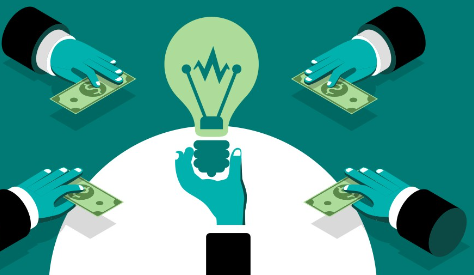Introduction to Crowdfunding

Understanding Crowdfunding and Its Possibilities
Thanks in great part to its ability to change how individuals finance their ideas, projects, and companies, crowdfunding has become a common phrase in recent years. This financial approach pools little donations from many people using the internet’s ability to empower individuals. Knowing crowdsourcing and its possibilities will help you to open doors that might otherwise be closed off. The ins and outs of crowdfunding, its several forms, advantages, drawbacks, and how best to use it to meet your needs are discussed in this paper.
Crowdfunding: what is it?
Usually over the internet, crowdfunding is a means of obtaining money by gathering modest sums of money from many individuals. Unlike conventional financing sources like bank loans or venture capital, crowdsourcing sites let anyone donate to or invest in causes, businesses, or ideas they find appealing. For non-profits, creatives, and businesses all alike, this democratic approach to fundraising has created opportunities.
The Development of Collective Fundraising
Not a novel idea is crowdsourcing. Public appeals have long been used historically to collect money for many purposes. Still, the internet and digital technologies have transformed this process. For both people and companies, sites like Kickstarter, Indiegogo and GoFundMe have made it simpler than ever.
Several Forms of Crowdfunding
There are various ways to crowdfund, each suited for distinct requirements and goals. Choosing the best suitable approach for your project depends on an awareness of these several forms.
- Crowdfunding based on rewards
Under reward-based crowdfunding, supporters get a non-financial incentive in return. This could call for early access to a product, speciality goods, or other benefits. Prominent examples where backers get prizes in return for their contributions are websites like Kickstarter and Indiegogo. For artistic endeavors like new technologies, movies, or gadgets, this kind of crowdsourcing is perfect. - Crowdfunding based on Equity
Investors using equity-based crowdfunding can own a part in the project or business they are sponsoring. This is like purchasing company stocks, and usually speaking, if the company performs well, there are financial gains. These kind of crowdsourcing are facilitated by sites like SeedInvest and Crowdcube. Startups looking for money from people who want to be part owners of the company will find it very appropriate. - Crowdfunding Based on Donations
Under donation-based crowdfunding, backers provide money without anticipating a profit. Social campaigns, personal crises, or charity endeavors all find application for this paradigm. Well-known for this kind of fundraising are sites like Just Giving and GoFundMe. It’s a great approach to get people behind problems the public finds personally relevant. - Crowdfunding Based on Lending
Lending-based crowding, sometimes referred to as peer-to–peer lending, is the process by which people lend money to companies or other people expecting to be reimbursed with interest. Under this paradigm, sites like LendingClub and Prosper function. For borrowers who might not be eligible for conventional loans but require funds to expand their company or cover personal expenses, this kind of crowdsourcing is helpful.
the advantages of crowdsourcing
Many benefits of crowdfunding make it an interesting choice for different fundraising requirements. Here’s why you might be the proper candidate for this:
- Availability of Money
Funding via crowdsourcing can provide access to money perhaps difficultly obtained by conventional means. For many, it’s a flexible choice since it lets businesses and creators obtain money without sacrificing stock or assuming debt. - Ideas’ Validation
A good crowdfunding effort can confirm your idea is valid. People ready to donate or invest suggest that your good or service has market demand. Building credibility and drawing more money or support can depend much on this affirmation. - Market Involvement
Organizing a crowd-funding effort will greatly increase your profile. Your project has more possibilities of success if it can be seen by a worldwide audience thanks to the appropriate marketing plan. This exposure can present other possibilities including media attention or alliances. - Involvement of the Community
Using crowdfunding helps you to create a community around your idea. Maintaining a feeling of connection and commitment via interacting with supporters and keeping them informed helps Helping to promote your project, this group might become your most ardent champions.
Difficulties and Thoughts to Remember
Though crowdsourcing has numerous advantages, it is not without difficulties. Knowing these possible obstacles can enable you negotiate the crowdfunding terrain more successfully.
- Strong rivalry
Growing popularity of crowdsourcing has resulted in more competitiveness. Having a strong pitch and a good marketing plan can help you to stand out from the competition among many projects fighting for interest. - Time and Work
Managing a successful crowdsourcing initiative calls for a lot of time and work. The process can be taxing from producing interesting material to handling backer communications. Being ready for the dedication needed to manage a campaign successfully is absolutely vital. - Chance of Error
Not every effort at crowdsourcing turns out. Many things can lead to failure, including

inadequate marketing, lack of interest, or unrealistically high financing levels. One should have reasonable expectations and have backup strategies ready.
- Legal and Regulatory Problems
Legal and regulatory rules apply to crowdsourcing. Your location and the kind of crowding will determine if you have to follow particular rules. See legal professionals to be sure your campaign complies with pertinent legislation.
Guidelines for Starting a Proficient Crowdfunding Project
Use these key actions to raise your chances of operating a successful crowdsourcing project:
Clearly state your objectives.
Clearly state the objectives of your project and required financial resources. Find out your necessary budget, intended use for the money, and desired outcomes. Establishing well defined, reasonable objectives will enable you to design a concentrated campaign plan.
- Select the Correct Platform.
Choose a crowdfunding site fit for your project objectives and type. Every platform has different audience, costs, and features; so, pick one that most suits your requirements. Look at several choices and weigh their terms and conditions.
Make sure your project’s value proposition is precisely expressed in a captivating pitch. To get the attention of possible sponsors, use excellent images, interesting movies, and a strong story. Share your objectives, financial plan, and schedule honestly.
- Provide a marketing plan.
Put in place a strong marketing plan to forward your campaign. Reach your target market using press releases, email campaigns, and social media. Dealing with possible sponsors and influencers will also help create buzz and draw support. - Keep Backer Interest.
Update and involve your backers all during the campaign. Frequent updates, open lines of contact, and quick answers to questions help to foster confidence and keep interest. Expressing gratitude for the assistance of your backers is also quite vital. - Schedule for Following Campaign
Create a post-campaign plan detailing how you will handle awards, handle money, and keep interacting with your supporters. Maintaining trust and developing long-term relationships with your supporters depend on good post-campaign administration.
Successful Crowdfunding Campaign Case Studies
Analyzing successful crowdsourcing initiatives could give insightful analysis and motivation. Here are some noteworthy instances:
One uses Pebble Technology.
At the time, the smartwatch campaign by Pebble Technology on Kickstarter made a record for the most funded initiative. Clear vision, interesting material, and good marketing helped the campaign to be successful. Pebble raised over $10 million thanks in large part to its creative idea and active community involvement.
- Rising Kittens
On Kickstarter, the card game Exploding Kittens rose to become among the most backed projects. Strategic stretch objectives, striking artwork, and a funny and relevant presentation drove the campaign’s success. Far above its intended target, the game brought in over $8 million. - Greatest Cooler
One outstanding example of a well-run reward-based crowdfunding initiative is the Coolest Cooler campaign. The campaign presented clever features in a cooler, like a blender and built-in speakers. The project had difficulties satisfying orders despite initial success, which emphasizes the need of reasonable preparation.
Future Patterns in Crowdfunding
As crowdsourcing develops, a number of patterns are determining its course. Maintaining knowledge of these trends will enable you to keep ahead of the curve and seize fresh possibilities.
One is blockchain technology’s integration.
Crowdfunding platforms are progressively including blockchain technologies. It provides improved openness, security, and transaction management and identity verification efficiency. This connection might simplify the crowdsourcing process and help to lower fraud rates.
- Equity Crowdfunding Development
As more investors look for chances to help early-stage businesses and startups, equity crowdsourcing is becoming popular. Equity crowdfunding is probably going to rise as rules change and platforms get more advanced, giving more choices for businesses and investors. - Development into New Markets
Crowdfunding offers chances for worldwide fundraising and is spreading into other geographical areas. Emerging markets are turning to crowdsourcing more and more to help local enterprises and initiatives, hence opening fresh channels of international cooperation. - Improved Data Analyzes
Data analytics’ developments are enhancing tracking and analysis capacity for crowd-funding campaign performance. Data-driven insights can enable activists maximize their plans, target particular groups, and raise their chances of success.
In essence,
Crowdfunding has transformed our means of funding for and supporting initiatives. Knowing its several forms, advantages, difficulties, and success-oriented techniques will help you to maximize its possibilities for reaching your objectives. Crowdfunding provides a dynamic and easily available answer for anyone trying to fund a significant cause, an entrepreneur needing financing, a creator with a fresh concept, or both. Accept the chances it offers and negotiate its complexity with well-informed plans to maximize this creative financing source.